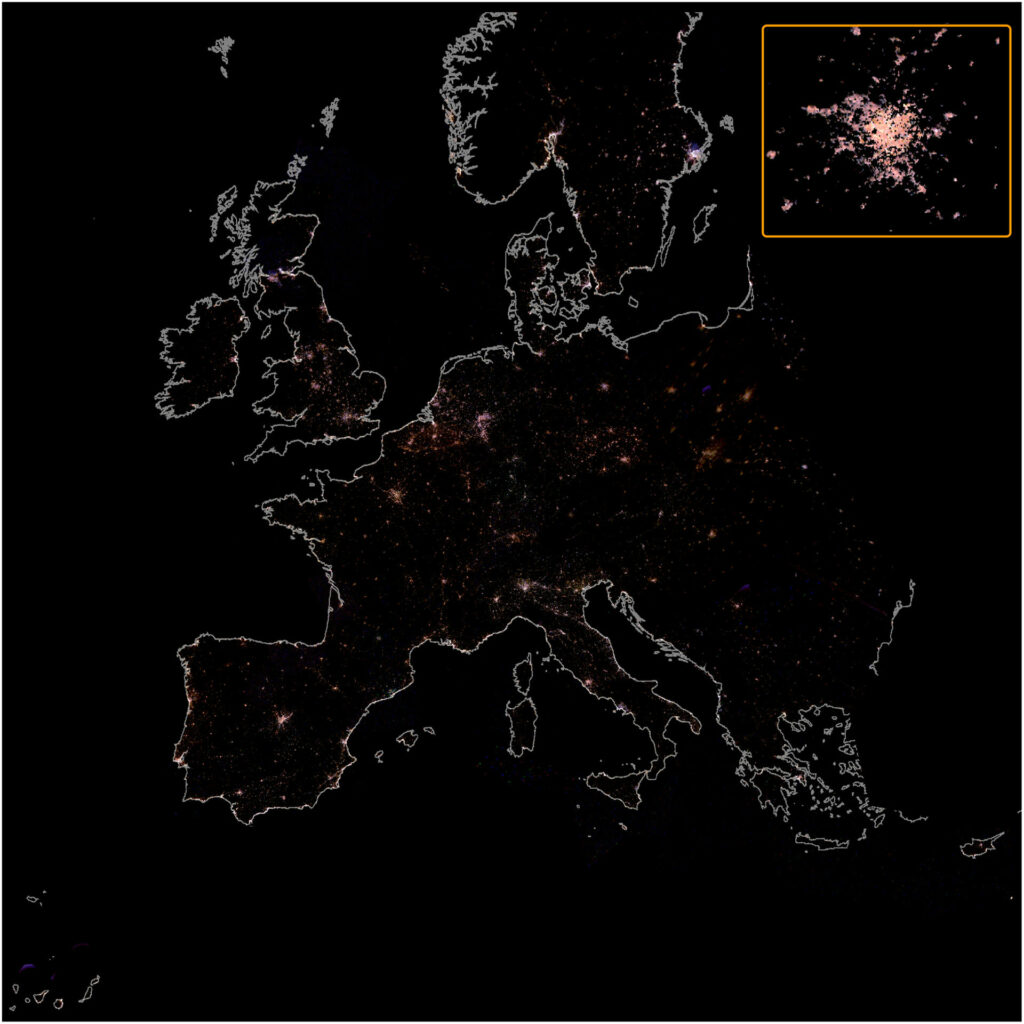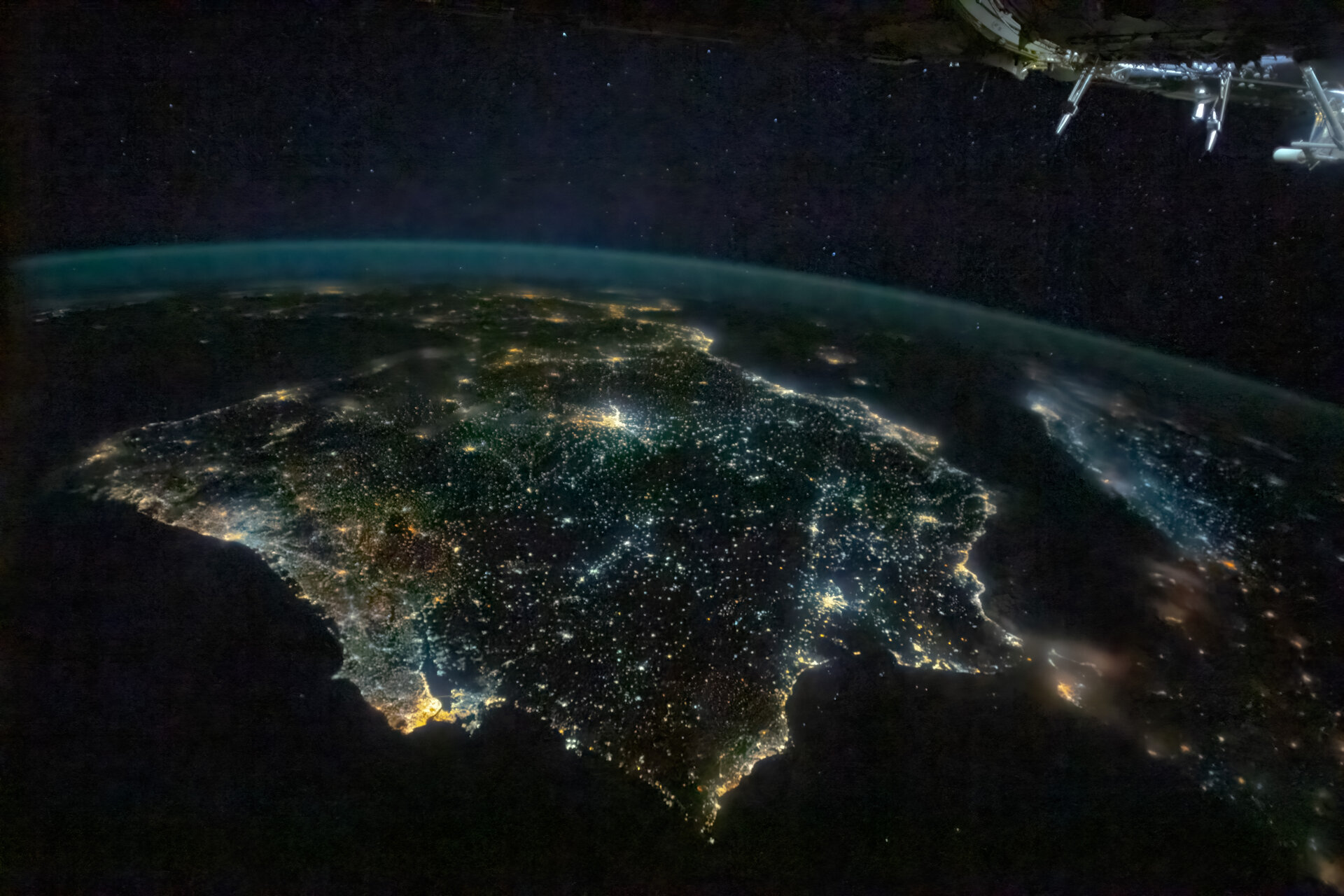The European Space Agency has published a map showing the light pollution of Europe. It was created on the basis of images taken by astronauts from the ISS.

Changing the color of night Europe
In recent years, many European cities have switched to LED lighting. This has led to a number of important consequences, which are especially clearly visible from space.




So, if you compare the pictures of Italian and British cities that first switched to the use of LED lights, you can well notice their “whitewashing”. At the same time, in countries such as Germany and Austria, where a large number of fluorescent and mercury lamps are still used, the shift is not so noticeable. Similarly, Belgium still mostly shines with the orange light of low-pressure sodium lamps, and the Netherlands with the golden light of high-pressure sodium lamps.
Negative consequences of the “LED revolution”
But it’s not just about changing the color of the lamps. Scientists note that the transition to LED lighting leads to a number of effects, not all of which are positive. So, in theory, it should have significantly reduced energy consumption and reduced costs. But paradoxically, the “cheap” light led to the fact that people began to install several times more lanterns. This significantly increased the degree of light pollution. According to the researchers involved in the creation of the map, at this rate, by the end of the decade, Europe will look like a giant bright spot from outer space.

Other negative effects of LED lighting are directly related to its blue-white light. It knocks down circadian rhythms and suppresses the production of melatonin, which negatively affects the quality of sleep and people’s health. In addition, bright light affects nocturnal animals and insects, affecting their ability to move and react to light sources. Finally, it makes stargazing even more difficult.
Anyway, the “LED revolution” has not led to the promised results, and in some ways even aggravated the existing problems. Their solution may be measures aimed at reducing energy consumption, which is especially important now, in the conditions of the energy crisis caused by Russian aggression. The authorities of many European cities have already taken some measures, such as turning off the night illumination of monuments and public buildings.
According to https://www.esa.int
Follow us on Twitter to get the most interesting space news in time
https://twitter.com/ust_magazine

